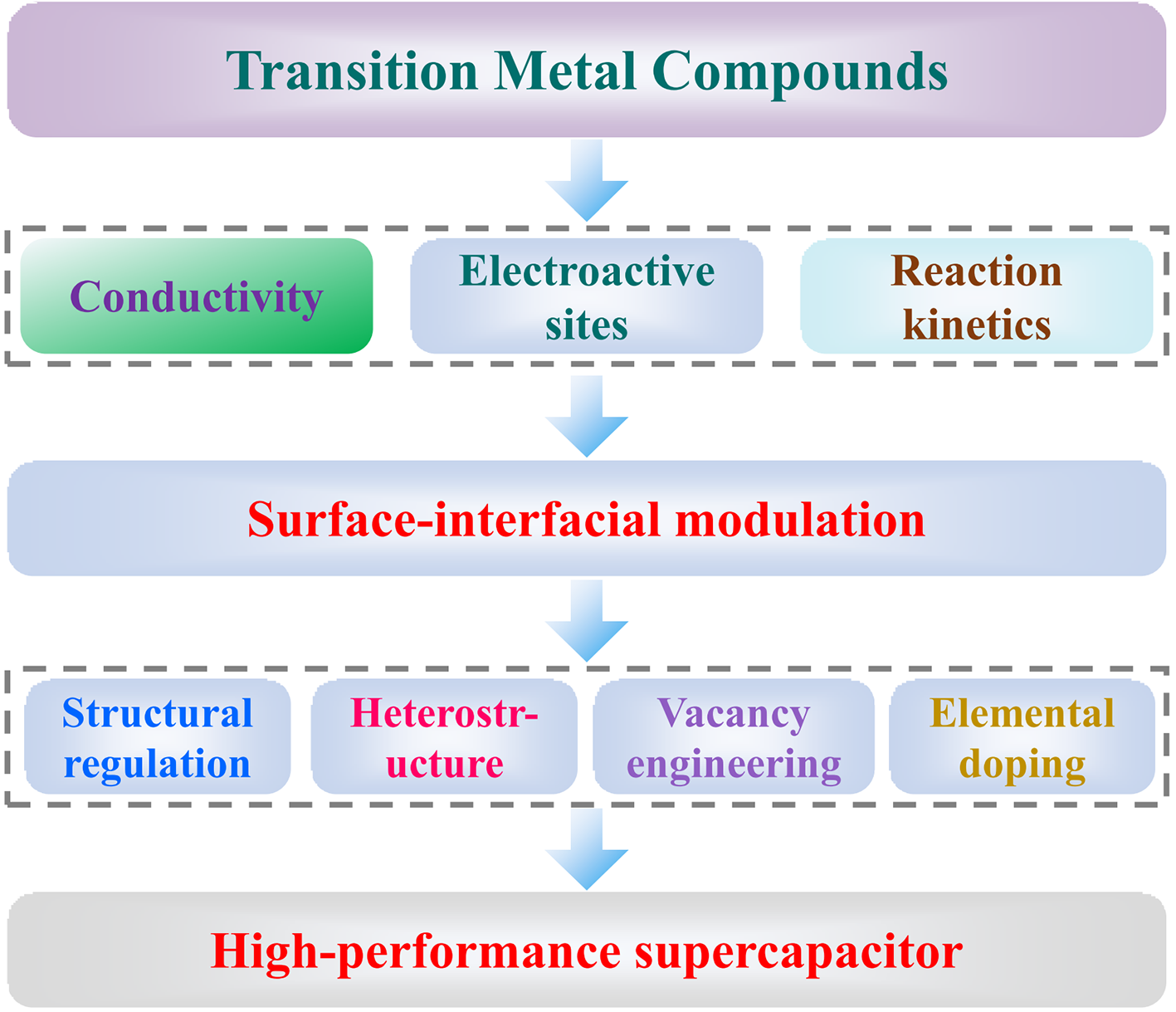 PDF(52401 KB)
PDF(52401 KB)


Enhanced Mechanism of Supercapacitance by Regulating the Surface Interface of Transition Metal Compounds
Xing Chen, Demin Jiang, Kun Xie, Lijun Liu, Yin Wang, Yuqiao Wang
Prog Chem ›› 2024, Vol. 36 ›› Issue (7) : 961-974.
 PDF(52401 KB)
PDF(52401 KB)
 PDF(52401 KB)
PDF(52401 KB)
Enhanced Mechanism of Supercapacitance by Regulating the Surface Interface of Transition Metal Compounds
the development of supercapacitors with high efficiency and good stability is of great significance in alleviating the energy crisis and environmental pollution issues.transition metal compounds store charge through Faraday redox reactions,leading to higher specific capacities.However,transition metal compounds suffer from poor electrical conductivity,slow reaction kinetics,and few exposed electroactive sites,thus leading to a definite difficulty in practical applications.in This paper,We have summarized the research progress of surface-interface modulation strategies in enhancing the electrochemical performance of supercapacitors to address the problems of transition metal compounds,such as morphology modulation,heterojunction,elemental doping,and vacancy engineering.this paper focuses on the mechanism of the above-mentioned methods from the perspective of morphological and electronic structure modulation on the physical and chemical properties of active materials.we aim to clarify the performance enhancement mechanism of supercapacitors and provide an important theoretical basis for developing high-performance and high-stability supercapacitors.Finally,the reasons for structural design and electronic modulation to improve the performance of supercapacitors are summarized,and the challenges faced by structural design and electronic modulation in constructing high-performance supercapacitors are outlined。
1 Introduction
2 Surface-interface modulation strategies for transition metal compound electrode materials
2.1 Structural regulation
2.2 Heterostructure
2.3 Elemental doping
2.4 Vacancy engineering
3 Conclusion and outlook

surface interface / supercapacitance / electronic structure / morphology / mechanism
| [1] |
|
| [2] |
|
| [3] |
|
| [4] |
|
| [5] |
|
| [6] |
|
| [7] |
|
| [8] |
|
| [9] |
|
| [10] |
|
| [11] |
|
| [12] |
|
| [13] |
|
| [14] |
|
| [15] |
|
| [16] |
|
| [17] |
|
| [18] |
|
| [19] |
|
| [20] |
|
| [21] |
|
| [22] |
|
| [23] |
|
| [24] |
|
| [25] |
|
| [26] |
|
| [27] |
|
| [28] |
|
| [29] |
|
| [30] |
|
| [31] |
|
| [32] |
|
| [33] |
|
| [34] |
|
| [35] |
|
| [36] |
|
| [37] |
|
| [38] |
|
| [39] |
|
| [40] |
|
| [41] |
|
| [42] |
|
| [43] |
|
| [44] |
|
| [45] |
|
| [46] |
|
| [47] |
|
| [48] |
|
| [49] |
|
| [50] |
|
| [51] |
|
| [52] |
|
| [53] |
|
| [54] |
|
| [55] |
|
| [56] |
|
| [57] |
|
| [58] |
|
| [59] |
|
| [60] |
|
| [61] |
|
/
| 〈 |
|
〉 |